by Kapilas Bhuyan

Today, as is everywhere, technology has taken a front seat in leading the day-to-day life, more so in film making in packaging a story in Odisha too. The outcome is often glossy, stylized and eye catching. However, the content of the package is weak for which the Odia film goers, particularly the younger generations are largely disappointed.
But, when we look back a little over the last eight decades time span of film making in Odisha, things may seem indistinct, yet it gives a clear impression of unique Odia identity.
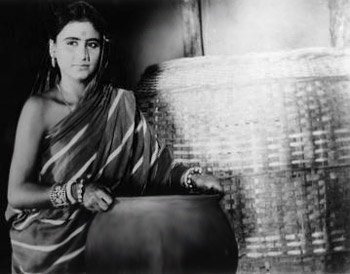
The release of the first Odia talkie ‘Sita Bibah’ by Mohan Sundar Deb Goswami on 28th April 1936 was a defining moment for ethnic film movement and added a new dimension to the expression of local identity. It had just been preceded by the formation of nationhood in the linguistic lines on 1st April in the same year, after long years of struggle. It was a precursor to the linguistic based nation states in the later years in Indian polity.
Just a week before the historic 1st April, the twelve-reeled first print of ‘Sita Bibah’ was already completed on 25th March and was shown in the touring cinema in Calcutta on 29th March. However, the film, made with a meager budget of Rupees 29,781 and 10 annas, was formally released in Orissa (as was known then) at Laxmitalkie Cinema in Puri on 28th April.
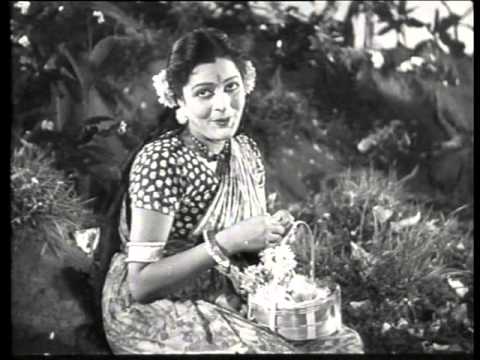
The second Odia film, ‘Lalita’, was made in 1949 and till the beginning of the sixties only a dozen films were made. If we take a quantitative view of film productions in a single year, the number of films produced was increased from single digit in the earlier years to double digits in the later time. However, in the following decade only a handful of films like ‘ShriJagannath’ (1950), ‘Aamari Gan Jhua’ (1953), ‘Kedar Gouri’ (1954), ‘Bhai Bhai’ (1956) and ‘Mahalakshmi Puja’ (1959) were made.
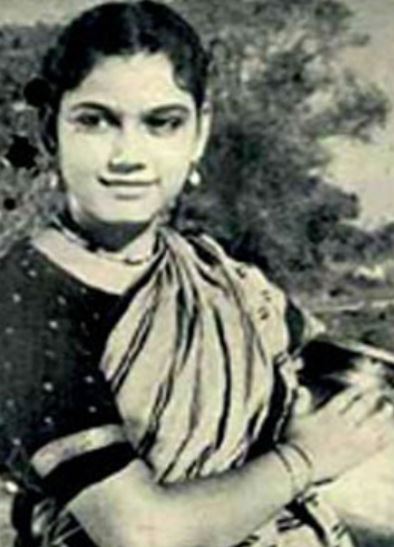
In the following two and half decade, spanning from 1960 to 1985, films like ‘ShriLokanath’ (Prafulla Sengupta, 1960), ‘Nua Bou’ (Prabhat Mukherjee, 1962), ‘Laxmi’ (Sarada Prasanna Nayak, 1962), ‘Surjyamukhi’ (Prafulla Sengupta, 1963), ‘Manikajodi’ (Prabhat Mukherjee, 1964), ‘Amadabata’ (Amar Ganguly, 1964), ‘Abhinetri’ (Amar Ganguly, 1965), ‘Malajanha’ (Nitai Palit, 1965), ‘Kaa’ (Sidharth, 1966), ‘Matira Manisha’ (Mrinal Sen, 1966), ‘Arundhati’ (Prafulla Sengupta, 1967), ‘Kie Kahara’ (Nitai Palit, 1968), ‘Adina Megha’ ((Amit Maitra, 1970), ‘Ghara Bahuda’ (Sona Mukherjee, 1973), ‘Dharitri’ (Nitai Palit, 1973), ‘Mamata’ (Byamokesh Tripathy, 1975), ‘Jajabara’ (Trimurti, 1975), ‘Gapa Hele Bi Sata’ (Nagen Ray, 1976), ‘Sesha Shrabana’ (Prashanta Nanda, 1976), ‘Abhiman’ (Sadhu Meher, 1977), ‘Chilika Tire’ (Biplab Roy Choudhry, 1978), ‘Sitarati’ (Manmohan Mahapatra, 1983), ‘Maya Miriga’ (Nirad Mohapatra, 1984) and ‘Dhare Alua’ (Sagir Ahmed, 1984) were a perfect blend of artistic excellence and commercial appeal, contributing to be called as the Golden Age of Odia Celluloid Saga.
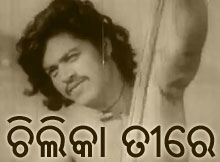
During the eighties, the artistic and aesthetic excellence of Odia cinema catapulted itself to national and international arena. In 1984 Nirad Mohapatra’s ‘Maya Miriga’ was considered to be the Second Best Film to get National Award, and also qualified to be an official entry in various international film festivals. However, it took one more decade to bask in the national recognition. In 1994, Susant Misra’s ‘Indradhanura Chhai’ received the Jury’s Special Mention at the national level, and made it to the competitive section of ‘Un-Certain Regard’ of Cannes Film Festival followed by its winning of the ‘Grand Prix’ at SOCHI International Film festival, Russia.
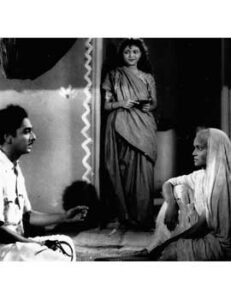
Again after a long gap of a decade and half, Prashanta Nanda’s ‘Jianta Bhuta’ won the National Award in the Environment section in 2009. This sums up the position of Odia film at national and international levels. However, Odia films have been invariably bagging National Awards in the best regional category almost every year. In this aspect, directors like Prafulla Sengupta, Prabhat Mukherjee, Sarada Prasanna Nayak, Nitai Palit, Sidharth, Mrinal Sen, Amit Maitra, Prashant Nanda, Biplab Roy Choudhury, Manmohan Mohapatra, Sagir Ahmed, A. K. Bir, Pranab Das, Himanshu Khatua, Subas Das, Prafulla Mohanty, Sabyasachi Mohapatra and Sambit Mohanty stand out.
Getting entry into Indian Panorama is a touch stone for making the presence felt in the national arena. Manmohan Mohapatra’s ‘Sitarati’ has made it for the first time to the Indian Panorama in 1983 and the other directors those who have made it to the exalted pantheon were Nirad Mohapatra, Sagir Ahmed, Biplab Roy Choudhury, A. K. Bir, Susant Misra, Bijay Ketan Mishra, Prafulla Mohanty, Sudhanshu Sahu and Sabyasachi Mohapatra.
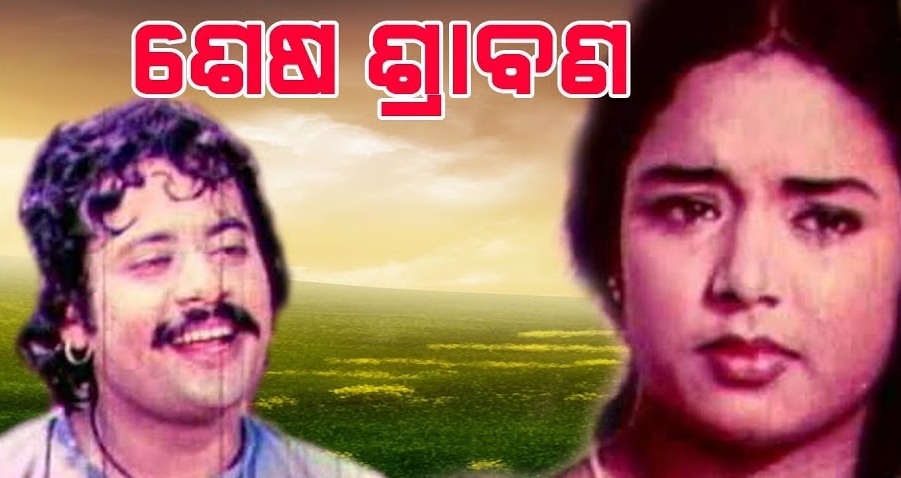
When there was a lean period in film viewing during the mid-seventies Prashanta Nanda’s ‘Sesha Shrabana’ (1976) and Sadhu Meher’s ‘Abhiman’ (1977) brought people back to the cinema halls. However, if we consider the singular contribution of any director to the body of Odia films, the foremost name that comes to mind is of Prashanta Nanda, followed by Nitai Palit. But if we combine quantity with qualitative and aesthetic aspects, Manmohan Mohapatra towers above the rest.
Song and music have had a significant presence in Odia cinema. In the first cinema ‘Sita Bibah’ there were a total of 14 songs, all emanating from the native folk singing style, and were sung by the artists themselves accompanied by traditional musical instruments. However, in ‘Lalita’, the background singing was initiated under the guidance of music directors Gouri Goswami and Suren Pal, and lyrics were specially written by Kabichndra Kali Charan Pattnaik. In the third film ‘Sri Jagannath’ (1950) there were four background singers with music direction jointly by Ranjit Ray and Balakrushna Das. In 1959 Akshay Monhanty made his debut in ‘Maa’ as a background singer with music direction by Bhubaneswar Mishra. Another background singer Sikander Alam made his foray in ‘Suryamukhi’ (1963). Narayan Prasad Singh and Debdas Chhotray made their maiden appearance in ‘Nuabou’ (1962) and ‘Ka’ (1967) respectively as lyricists. Until this period, songs and music were totally based on traditional and Deshiya Ragas.
Inspired by western music, Shantanu Mohapatra introduced a modern trend in ‘Suryamukhi’ (1963). While Akshaya Mohanty switched to music direction in ‘Malajanha’ in 1965, and Prafulla Kar became a debutant music director in ‘Mamata’ (1975). While Balakrishna Das was experimenting with Odia folklore singing and ‘Boli’ (innocuous slangs), Bhubaneswar Mishra, Shantanu Mohapatra and Akshaya Mohanty combined Western notes to enhance the Odia traditional tone. It ushered in the modern singing tradition of Odia film songs.
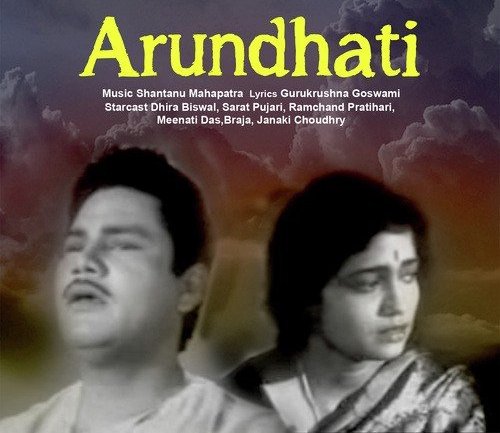
Prafulla Sengupta’s ‘Arundhati’ in 1967 was a milestone in Odia film song tradition as Mohammadd Rafi and Lata Mangeshkar rendered solo songs by humming immortal lines like ‘‘Mayurigo Tuma Aakashe Mu Dine mallhare Megha Saajili’’ (“I was once music in clouds, you danced gleefully with…”) and ‘‘Aaji Mu Shrabani, Luhara Harini’’ (“Today I’m like the rainy seasons, like the deer who cries…”) of lyricist Jibanananda Pani under music direction by Shantanu Mohapatra.
The future of Odia film song and music seems to be bright in the hands of music directors like Malay Mishra and Bikash Das, who have proved their ability in musical hits like ‘Neijaare Megha Mate’ and ‘Aji Akashe Ki Ranga Lagila’ respectively.
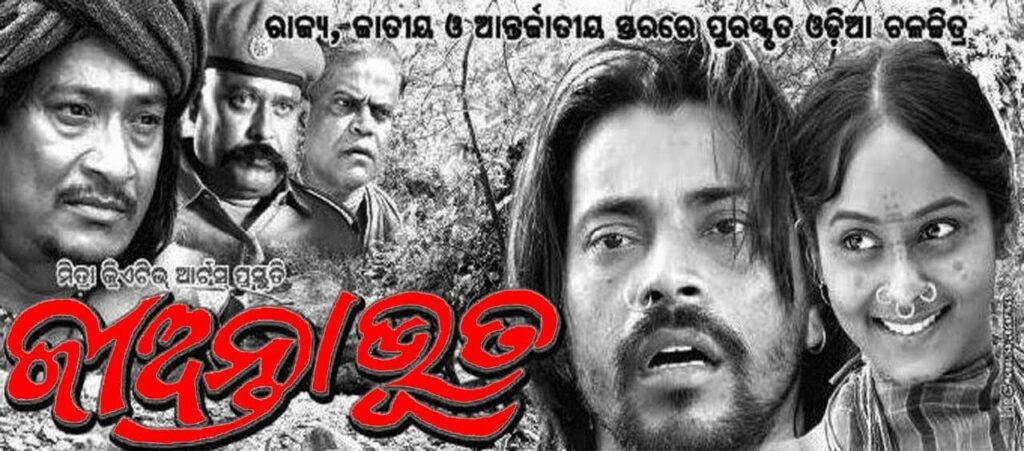
While in the initial phase the thematic story lines were invariably based on mythology, they gradually turned to socially relevant themes starting from ‘Amari Gaan Jhua’ (1953) and ‘Bhai Bhai’ (1956) onwards. During the sixties ‘Manikajodi’, ‘Amada Bata’, ‘Abhinetri’, ‘Malajanha’, ‘Matira Manisha’ and ‘Adina Megha’ were based on highly appreciated literary works. Both in the sixties and the seventies, women were the central characters in Odia cinema depicting their agony, happiness, emotions and inner-beings leading to tear-jerkers raking in box office mullahs.
On the other hand, as far as the non-fiction films are concerned Odia filmmakers are not very far behind, though not with much of quantity but with the qualitative parameters, they have been able to make a dent at the national and international levels. The trend was initiated by Ghanshyam Mohapatra with his documentary film titled ‘Odisi Dance’ being produced by Films Division in 1972. The film remains as a valuable documentation of the Classical Odisi Dance disseminating the very basics of the repertoire.
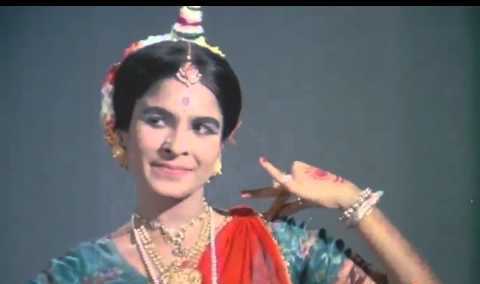
Thereafter, major directors like Nirad Mohapatra, Manmohan Mohapatra and Susant Mishra apart from making their landmark films, also have made some finest documentary films. But non-fiction film directors those who have made it to fetch National Awards are Rupashree Nanda, Kapilas Bhuyan and Lipika Singh Darai for their films ‘Harvest of Hunger’ (2005), Jatra Jeevan Jeevan Yatra (2006) and Eka Gachha Eka Manisha Eka Samudra (2012) respectively. Besides, ‘Kalahandi’, a documentary film that has compiled the plight of people in perennial penury being directed by Goutam Ghosh and produced by Odia film producer Soudamini Mishra has also bagged the National Award in 2002. Again, a short docu-fiction film ‘Breathing Without Air’ (2004) by Kapilas Bhuyan has fetched Best Short Film Award at Festival du Cinemma de Paris and received Jury’s Special Mention in New York Short Film Festival, besides being an official entry into more than a dozen international film festivals.

With this enriched history of Odia films spanning a little over the last 80 years has no doubt undergone a considerable thematic and stylistic transformations. With the new age technological application the serious new generation Odia filmmakers with strong thematic content, one can really hope, will surely make Odisha as a major film-making center in the country within a decade or so.
[The author is a Senior Journalist & National Award winning Filmmaker]























Well researched and written.
It’s ridiculous that people knowing nothing about Odia Cinema, come forward to write about that with some gathered knowledge. The first photo in the article is not the still of ‘Sita Bibaha’.